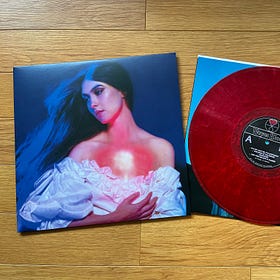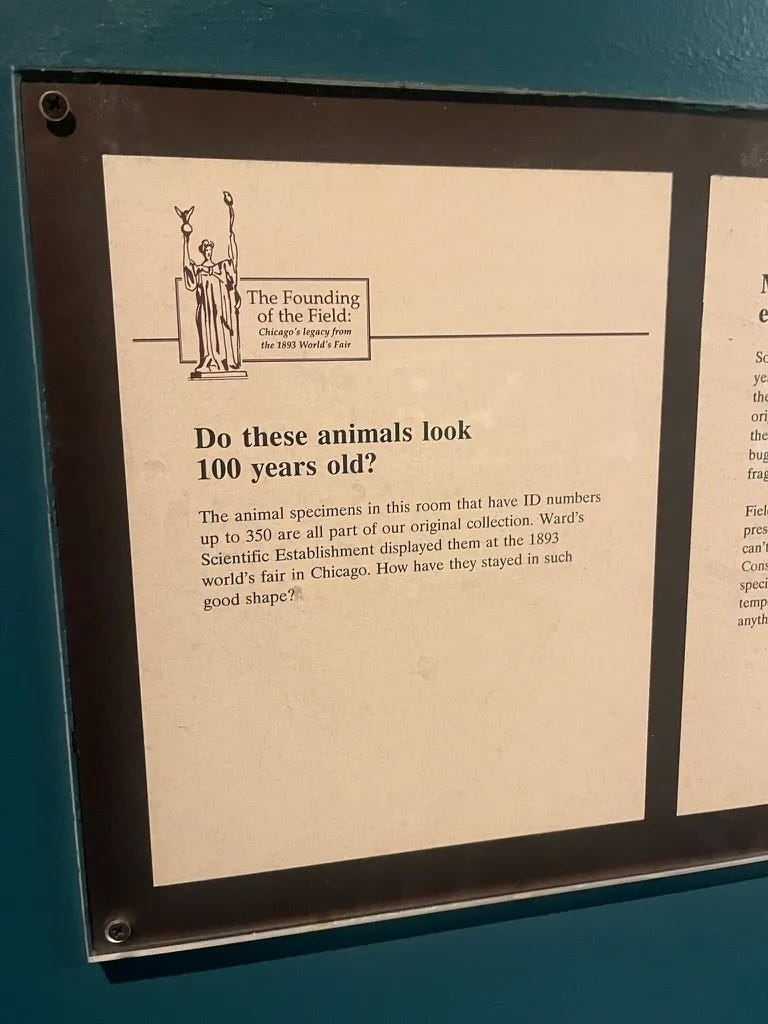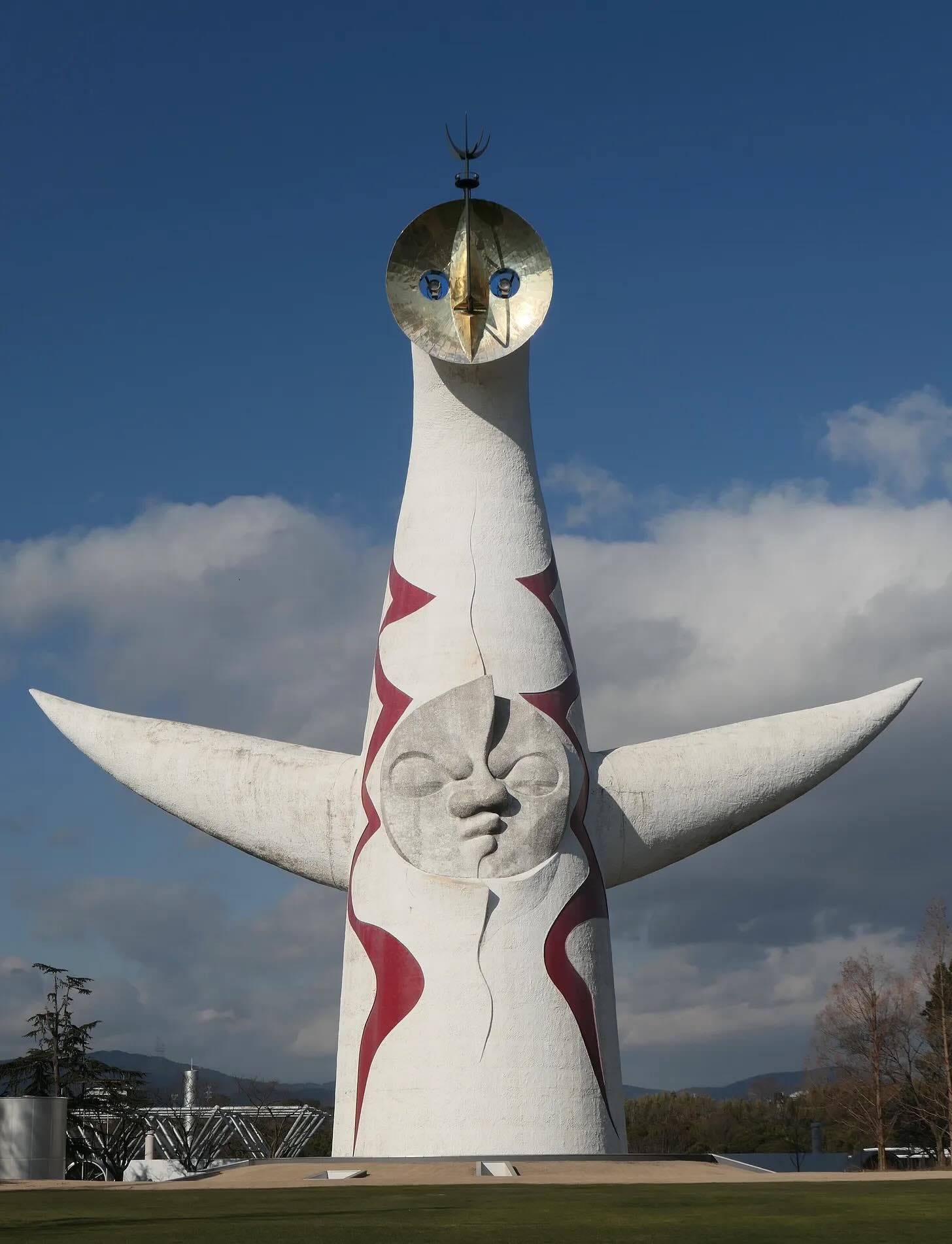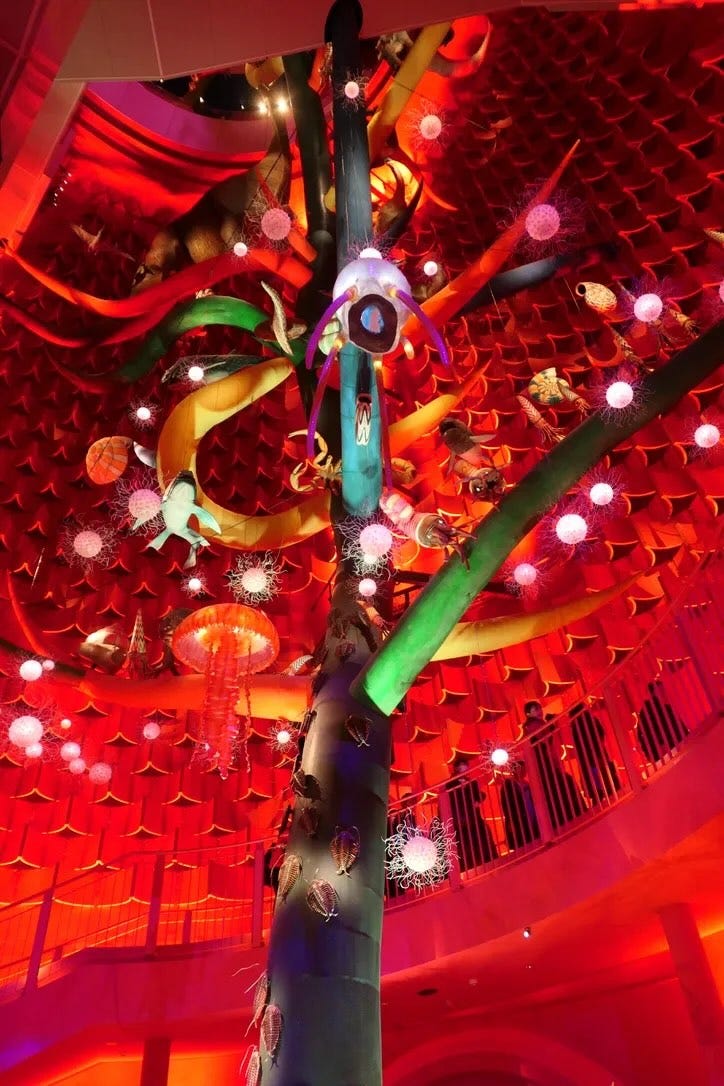1970 Osaka Expo popularized conveyer belt sushi
Part 1 of 2 on expos
Short updates:
There’s no shortage of bad political news these days, but I’ll highlight a local one that’s close to my heart. Illinois legislature failed to pass a transit funding bill in May. That means unless they pass some version of the bill later this year, Chicagoland’s transit agencies (CTA, Metra, Pace) will face severe service cuts—really severe, like stopping whole “L” lines and many bus lines. I think they will pass something, but these agencies can’t budget based on hope so they’re already spending resources figuring out what to cut.
Summer means free Millennium Park concerts. We just saw Lido Pimienta (Colombia/Canada) and she was fun. From the Millennium Park Summer Music Series, I’m interested in Novos Baianos (7/21), Orchestra Resavoir (8/4), and Caramelo Haze (8/7).
We returned from Japan about 2 weeks ago, after spending 2 weeks there. I do want to start by linking to 2 of my posts from the last time I was there.
Impressions of Japan
I recently came back from Japan, and this post will be a list of short observations—none of this is systematic or rigorous, so add a handful of salt. There’s probably a couple more posts from the trip.
All the COVID-related impressions are not relevant anymore, but the rest is still pretty relevant. One thing I would add, now that our older kid isn’t wearing diapers anymore, is that the public bathrooms in Japan are great. They’re ubiquitous in city centers and train stations, they’re generally very clean, and there’s often “multi-purpose” bathrooms which are family bathrooms with extra amenities.
2 easy ways to "eat like a local" in Japan
I haven’t spent enough time recently in Japan to give people specific recommendations like “go to this restaurant and have this”. But I think I understand the culture well enough to give some general advice on where to look for interesting things as visitors. This is that post.
This 2nd post, highlighting konbini (convenience stores) and depachika (food sections in department store basements) as good places to get something the locals eat, is also very relevant. This is still the main general advice I give when someone asks for recommendations in Japan, and we ourselves got food from these places multiple times.
Expos, what are they?
We mostly stayed in Osaka again, and one of the things we did was to go to Expo 2025, happening close to where we were staying. It runs until 10/13, so if you’re in Japan anytime before that, I definitely suggest you look into it. From talking to Americans, though, I found that I need to first explain what an expo is. That’ll be this whole post, and I’ll talk about Expo 2025 in the next post, coming soon.
Expos, or world’s fairs1, are big events where a host city invites countries around the world to showcase their culture and technologies. Major ones called World Expos have been happening once every 5 years since 2000, so you can think of it as the Olympics of culture. They used to be a lot more common in the US, but the last major ones in the US happened in the 60s.
I happen to be pretty familiar with many cities2 that were shaped by world’s fairs in the past. See how many of these you know about:
Chicago hosted World’s Columbian Exposition in 18933. Most of the fair took place in Jackson Park and Midway Plaisance, 2 parks in and around Hyde Park. These parks exist in their current forms thanks to the fair. Almost all of the buildings from this event are gone, but the 2 that remain are now the Art Institute and the Museum of Science and Industry (MSI). Field Museum was a previous occupant of the MSI building, and I learned that the earliest part of their collection comes from the fair.
I’ve finally been reading The Devil in the White City about this fair and a serial killer who operated in Chicago during that time—this may be the most famous book about any world’s fair.From the 1904 world’s fair, St. Louis still has Forest Park, St. Louis Art Museum, and Washington University’s Brookings Hall.
From Seattle’s world’s fair in 1962, we have the Space Needle, the area around it now called the Seattle Center, and the monorail that connects the Seattle Center to downtown.
San Francisco is an interesting one because it held 3 different world’s fairs that each left little traces. The 1894 fair was in Golden Gate Park, leaving behind the Japanese Tea Garden among other things. The 1915 fair took place in what is now the Marina District, and we still have the Palace of Fine Arts there. The Legion of Honor is a replica of the French pavilion from that fair. Treasure Island in San Francisco Bay was built specifically for the 1939 world’s fair.
Montreal was proud enough about Expo 67 that they named a baseball team after it. Both the Biosphere and Habitat 67 are pretty iconic.
Finally, Osaka4 previously hosted Expo ‘70. The venue is now a park, and the only thing remaining on site is the Tower of the Sun, a gigantic sculpture/building created by the artist Tarō Okamoto.
A few years ago, we were lucky enough to see the insides of the tower, which is usually closed to the public. It’s supposed to be similar to what the visitors to the expo would’ve seen when they went inside.
In Japan, the 1964 Tokyo Olympics and Expo ‘70 are considered hugely significant events that symbolized Japan’s rapid growth in the decades after WWII. I can point to the manga series 20th Century Boys as a work of art that depicts the expo’s cultural impact.
And the title of this post is true. Conveyor belt sushi started in Osaka Prefecture in 1958, and became a lot more popular after it was served at Expo ‘70.
Are expos not as big these days?
This post from Ted Gioia5 is based on the premise that no one has heard about Expo 2025. I was very annoyed and wrote an annoyed comment that ended up becoming the most liked comment. I did agree with him, though, that expos are just not as big a deal as they used to be. 64 million people visited Expo ‘70 in Osaka. Expo 2025 is expecting less than half as many visitors.
In the comment, I also linked to the essay “The world of tomorrow” by Virginia Postrel, where she discusses how the future used to be glamorous, but it no longer is. The 1939 New York World’s Fair provides her with an example of glamorous depictions of the future. People used to get really excited about flying cars and all that.
I really recommend reading the full thing, but here’s 2 things she points out:
Modernists, who thought experts would keep improving the world, were culturally influential, until the counterculture, skeptical of expertise, gained the upper hand.
Things look glamorous from far away, when you don’t know all the annoying details. When we got actual technological advances, we quickly got used to the benefits and noticed the imperfections.
The first point is very relevant for world’s fairs. The first world’s fairs happened as the Industrial Revolution was starting ot affect people’s lives, and if you look at the themes for expos, most of them are about progress due to technology. As people got less excited about technological progress, expos became less culturally relevant.
I can think of other reasons for why expos got less glamorous. Air travel has gotten much cheaper over the past few decades, so more people can afford to travel abroad. The internet also lets you get a sense—however imperfect—for what other countries are like, so people are much harder to impress now.
And yet, Osaka decided to host Expo 2025. More on that next time.
What I’m listening to now
Thinking about that Expo ‘70 in Osaka, my mind went to this album. This is also an opportunity for me to say something about Sérgio Mendes, who died last year.
I bought this CD at a Tower Records when I was visiting Japan during my college years. The CD was actually never released in the US.
Mendes’s main formula is adding Brazilian touches to popular songs in English, with a shameless focus on pleasing the crowd. “Daytripper” is probably the strongest example of that. “Mas Que Nada” is his biggest hit6 and a fun one. There’s other times, though, when maybe he should have had a bit more shame.
One fun moment comes at the end of the first track. Mendes’s first word is “おおきに(ōkini)“, an Osaka-dialect word for “thank you”7. He follows it up with “もうかりまっか(mōkarimakka)“, which is “how are you?” in Osaka dialect, but the literal meaning is “are you making money?”, which reflects Osaka’s history as a merchant city8. The audience surely appreciated how he did his homework.
I’ll mostly use the term “world’s fair” for the ones in the US, and “expos” for the ones outside, since that seems to be how the preferred terms depend on geography.
I’ve lived in St. Louis, Seattle, and not quite San Francisco but Berkeley. Montreal and Osaka are cities that I’ve been to multiple times.
and a less famous one in 1933-4, which took place in Northerly Island.
It was hosted by Osaka Prefecture and not the city of Osaka, and the site was in Suita, just north of the city.
whom I recommend generally as someone who’s read widely, and especially for his takes and recommendations on music.
It’s a cover of Jorge Ben.
Literally, it means “very much”, so it’s really an abbreviation for “thank you very much” where the “thank you” got left out.
I’ve never heard it in the wild, and I’ve even seen claims that it wasn’t a real Osaka greeting until it somehow entered mainstream pop culture and became a bit.





The interior of the tower of the sun looks incredible!